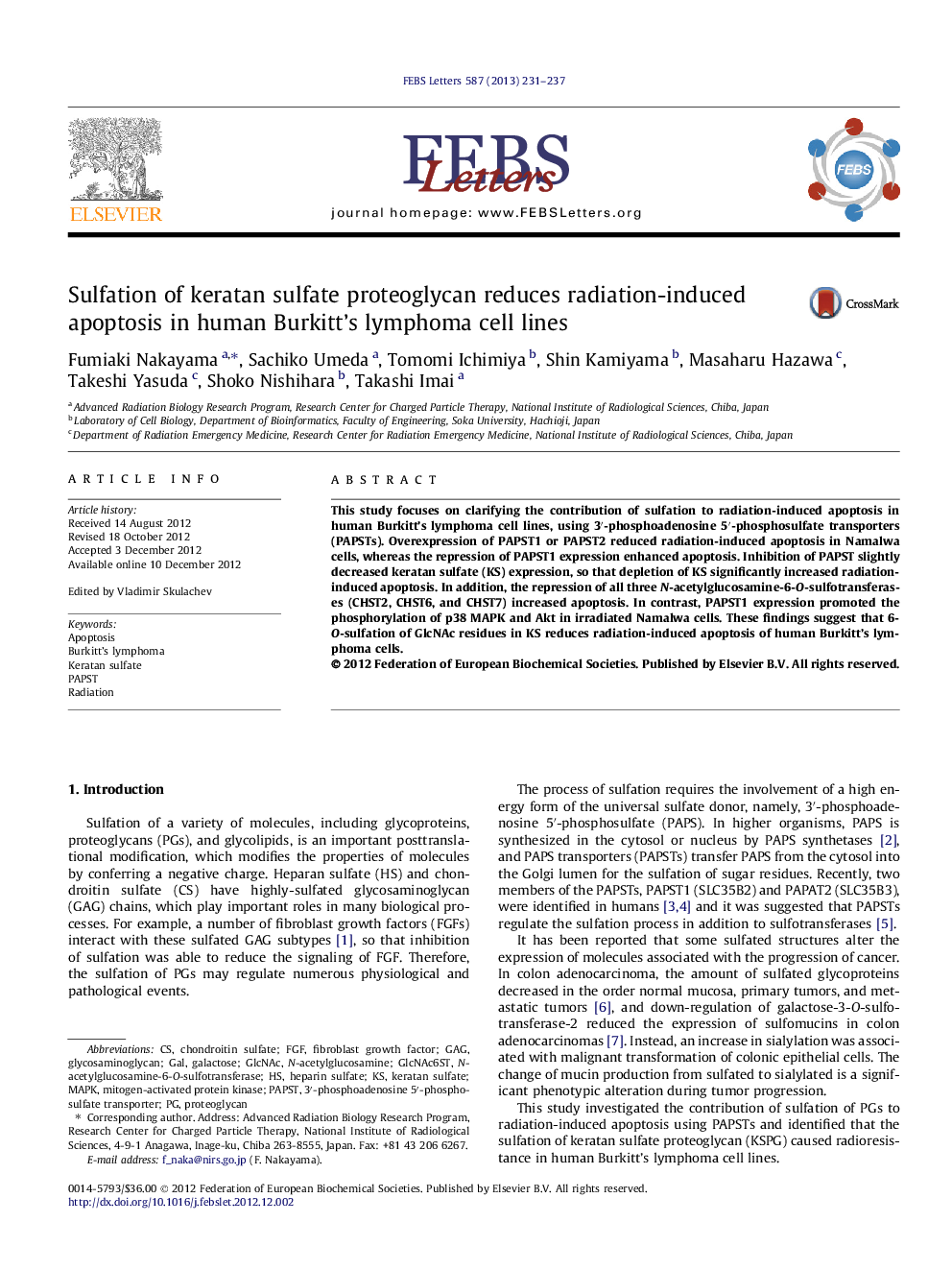| Article ID | Journal | Published Year | Pages | File Type |
|---|---|---|---|---|
| 2048082 | FEBS Letters | 2013 | 7 Pages |
This study focuses on clarifying the contribution of sulfation to radiation-induced apoptosis in human Burkitt’s lymphoma cell lines, using 3′-phosphoadenosine 5′-phosphosulfate transporters (PAPSTs). Overexpression of PAPST1 or PAPST2 reduced radiation-induced apoptosis in Namalwa cells, whereas the repression of PAPST1 expression enhanced apoptosis. Inhibition of PAPST slightly decreased keratan sulfate (KS) expression, so that depletion of KS significantly increased radiation-induced apoptosis. In addition, the repression of all three N-acetylglucosamine-6-O-sulfotransferases (CHST2, CHST6, and CHST7) increased apoptosis. In contrast, PAPST1 expression promoted the phosphorylation of p38 MAPK and Akt in irradiated Namalwa cells. These findings suggest that 6-O-sulfation of GlcNAc residues in KS reduces radiation-induced apoptosis of human Burkitt’s lymphoma cells.
► Overexpression of PAPST reduced radiation-induced apoptosis in Namalwa cells. ► Inhibition of PAPST slightly decreased the expression of KS. ► Depletion of KS significantly increased radiation-induced apoptosis. ► The repression of N-acetylglucosamine-6-O-sulfotransferases increased apoptosis. ► PAPST1 expression promoted the phosphorylation of p38 MAPK and Akt in irradiated cells.
